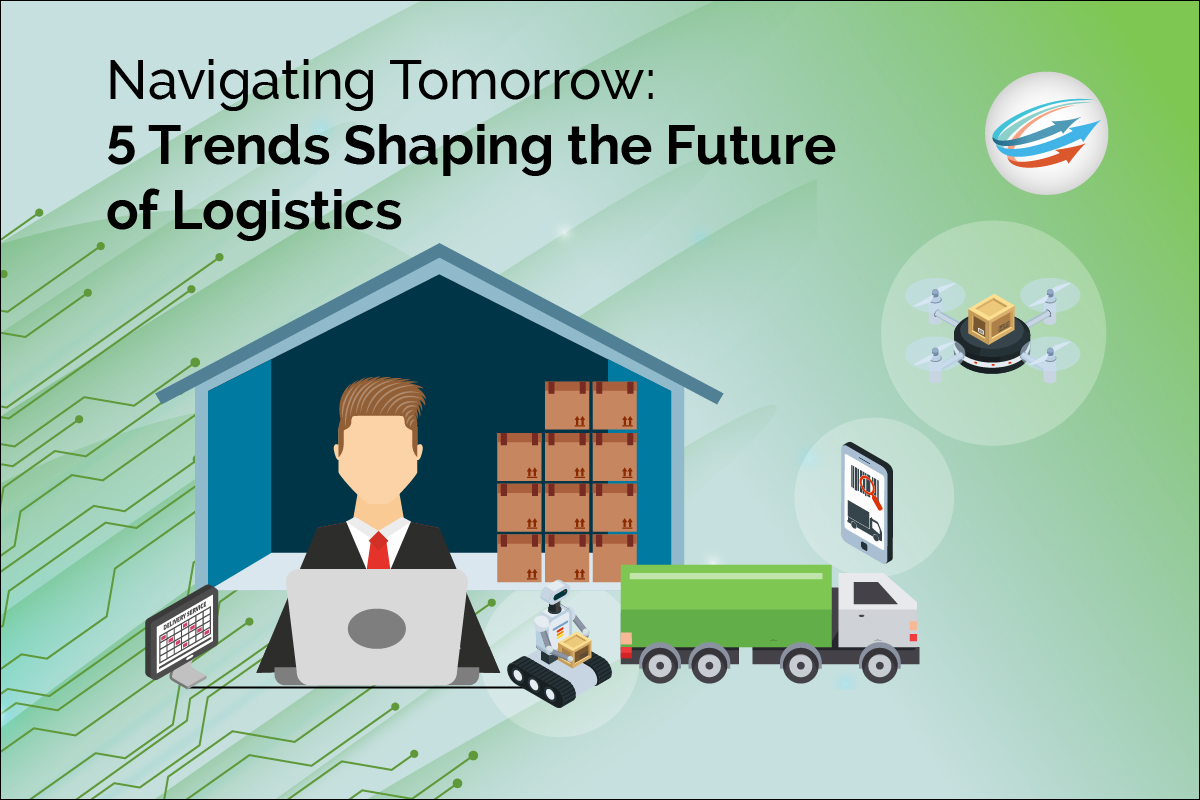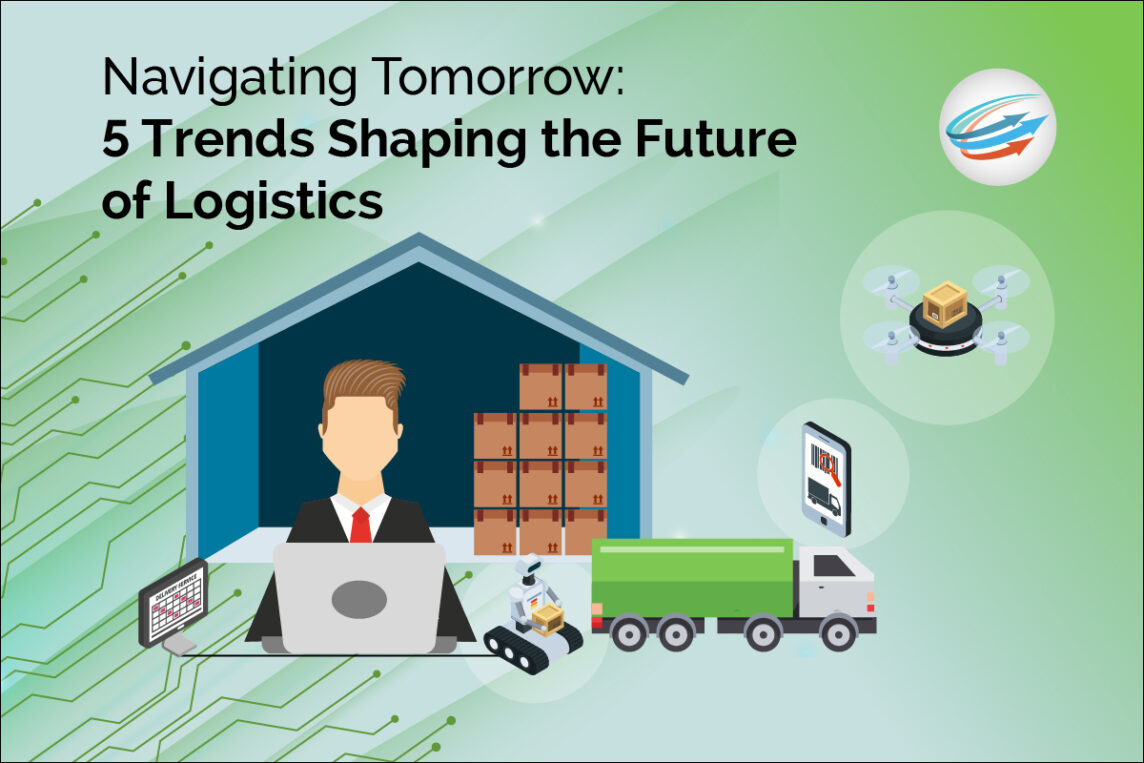
The world of logistics has never stood still. From the days of Phoenician merchants navigating the Mediterranean to modern global just-in-time supply chains, it has always been defined by the pursuit of what comes next. Today’s logistics professionals are grappling with an environment that is fast, interconnected, and more complex than ever. The future isn’t just another port of call; it’s a destination shaped by logistics trends that we can already see appearing on the horizon. Below we explore five of the top trends shaping the future of logistics.
1. Tech-Powered Efficiency
The backbone of any successful logistics operation is efficiency. And technology in logistics has gone from being a strategic advantage to a necessary component. In the future, we can envision warehouses that are more automated than manual, with robotic arms not just moving inventory, but managing it as well. The rise of automation and robotics isn’t just about speed; it’s about accuracy too. These systems can offer unprecedented precision in fulfilling orders and managing inventory.
It’s not just inside the warehouse where tech is making its mark. The Internet of Things (IoT) is creating a connected web across the entire supply chain, giving real-time insights into the location and state of individual items. Artificial Intelligence (AI) is taking on a more significant role, helping to optimize routes, manage inventory, and forecast demand with uncanny accuracy. And on the horizon, we see solutions like AR and VR, which could transform everything from freight loading to customer deliveries.
2. The Evolving Customer Journey
The modern customer expects more from their shopping experience, particularly in the realm of logistics. Faster shipping times, same-day delivery, and the ability to choose how and when goods are delivered are no longer perks—they are expected as part of a business’s supply chain management. E-commerce and omnichannel retail are here to stay, blurring the lines between the digital and physical worlds. This means logistics providers must be agile and have the ability to seamlessly integrate across multiple platforms and channels.
However, speed doesn’t trump quality. Transparency is key. Customers want to know where their order is, right now, and many businesses are responding with real-time tracking solutions. They want assurances that the product they buy is the product that arrives, free of damage or tampering. In the future, logistics will be gauged by these customer-centric metrics, forcing a shift toward a more “user experience” focused approach.
3. The Green Imperative
With climate change increasingly at the forefront of public consciousness, logistics is feeling the pressure to go green. The future of logistics will be measured not just in terms of its efficiency but also in its sustainability. The industry is making strides towards reducing its carbon footprint through the adoption of electric vehicles, the use of eco-friendly packaging materials, and often-overlooked methods such as efficient loading that can vastly reduce fuel consumption.
Sustainable logistics isn’t just a matter of good PR; it’s also about efficiency. A greener supply chain is often a more streamlined and cost-effective one. The push for sustainability is driving the adoption of advanced energy sources and the exploration of alternative solutions such as green roofs on distribution centers that manage stormwater and reduce the urban heat island effect.
4. The Rise of Collaborative Logistics
Traditionally, logistics has been a competitive market, but the future looks far more collaborative. By sharing assets and knowledge, logistics providers can reduce redundancies, cut costs, and provide more efficient services. This isn’t just theory but a trend we are already witnessing in the rise of logistics marketplaces, last-mile delivery, and platforms that facilitate collaborations between various stakeholders.
Pooling resources makes everyone stronger. Collaborative logistics is also adding a layer of flexibility to supply chain management, allowing businesses to respond more effectively to disruptions. A robust platform can allow for a much more iterative approach to logistics, with partners able to dynamically join forces when needed, and split off to serve other needs.
5. The Data-Driven Warehouse
Data is increasingly the currency of logistics, with analytics tools becoming more sophisticated and more readily available. The data-driven warehouse can adjust to changing demand with ease. It uses real-time information on inventory levels to optimize both the layout of the warehouse and the movement of goods, ensuring that there is neither overstock nor stockouts.
With advanced analytics tools and technology in logistics, warehouses can predict trends and consumer demands, adjusting their operations to meet them. This level of intelligence can have a significant impact on a business’s bottom line, ensuring that resources are always deployed where they are most effective. Data-driven warehouses are not just warehouses; they are strategic assets that have become of one the biggest logistics trends.
How APS Fulfillment, Inc. Is Shaping the Future of Logistics
To thrive in the logistics industry of tomorrow, businesses need to partner with logistics providers that not only understand the trends but are actively shaping them.
APS Fulfillment, Inc. is at the forefront, influencing and adapting to these logistics trends. We specialize in end-to-end logistics services, integrating advanced technologies to enhance the efficiency and accuracy of our operations. Our commitment to innovation and sustainable logistics has set us apart as a leader in the logistics industry.
Get in touch with us today and one of our consultants will tailor a fulfillment plan that will help grow your business. Call (954) 582-7450 or email [email protected].




